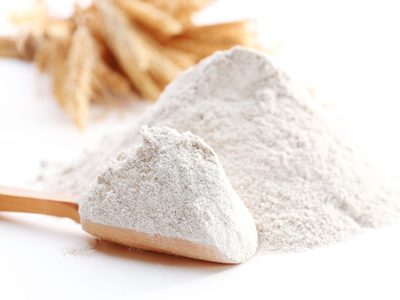Slow demand from importers, notably in Africa, has given the rice market a soft tone in recent weeks, with prices steady to lower, even though a record new crop is set to meet even higher consumption.
“Amid few fresh fundamental developments, Asian white and parboiled rice markets were steady to modestly lower during April,” the International Grains Council (IGC) said in its Grain Market Report. “Highlighting generally weaker sentiment, the IGC GOI rice sub-Index fell by around 1% m/m, to its lowest since early 2008.”
Export prices in Thailand eased, the key 5% broken grade down by $5, to $385 fob, it said. “Despite mild support from domestic purchases ahead of the Songkran festival, a period associated with increased consumption, sluggish international demand weighed.
“Aside from sales through diplomatic channels, buying interest from key importers in Asia and Africa has been limited, while the temporary suspension of state auctions to sell stockpiled rice has added to uncertainty,” it said. “In Vietnam, broken rice markets fell slightly as initial support from the government’s main crop stockpiling scheme was outweighed by limited export interest – including from China, a major buyer in recent years.”
The 5% grade fell by $9, to $359 fob.
“Markets elsewhere in Asia were mixed, with offers in India steady to lower in thin activity, partly pressured by the imminent winter-sown (rabi) crop harvest,” it said. “Outside of Asia, export prices in the Americas dropped further, with values in Argentina and Brazil weighed by increasing new crop availabilities.”
The USDA’s Economic Research Service (ERS), in its Rice Outlook, also noted a fall in most grades of Thailand’s regular-milled white rice by 2% to 4% from a month earlier, which it blamed on a lack of new sales and a weaker baht. “Price quotes from Vietnam have decreased slightly over the past month, with new sales slow,” it said. “U.S. prices for long-grain milled rice and rough rice have declined from a month earlier.”
The ERS projected global rice production in 2015-16 at a record 482.1 million tonnes on a milled basis, 6.4 million tonnes more than in the previous year. “The bumper crop is primarily due to expanded area,” it said. “At a record 161.9 million hectares, global rice area in 2015-16 is up 1.7 million hectares from a year earlier.”
Most of the increase in area is in Bangladesh, India, and Thailand.
The ERS projects global rice consumption up 1% at 489 million tonnes in 2015-16. “This is the third consecutive year of consumption exceeding production,” it said. “China accounts for the bulk of the projected increase in global consumption. At 151 million tonnes, the country’s rice consumption is up almost 2% from a year earlier, 5 million tonnes above production, and the highest on record.”
ERS is also projecting record consumption in Bangladesh, Burma, Cambodia, India, Indonesia, the Philippines, Thailand, and Vietnam. “Although not a record, U.S. consumption is projected to increase 1% in 2015-16 to 4.17 million tonnes,” it said.
In the commentary accompanying its Rice Price Update, the United Nations Food and Agriculture Organization (FAO) also noted falling prices. “In April 2015, the FAO All Rice Price Index (2002-2004=100) averaged 218 points, only 1 point less than in March, but the eighth consecutive month of declines,” it said. “Quotations in the Higher Quality Indica, Aromatic and Japonica rice segments were slightly down compared to March, while Lower Quality Indica prices showed some strength, with the corresponding sub-index gaining about 2 points, or 1%.”
It reported a falling price trend in Thailand on subdued demand, despite growing evidence of a much reduced 2014 secondary crop.
“In Vietnam, the ending of the government 1-million-tonne procurement round may have contributed to a retreat of export quotations, while in India a similar weakening could be partly attributed to the arrival of the new supplies from the Rabi harvest,” it said. “Against the tide, prices in Pakistan firmed, partly reflecting heavy rains and logistical domestic constraints that hindered rice transportation and deliveries. Prices were under downward pressure in South America, especially Brazil and Uruguay, but largely stable in the United States.
“According to the FAO Index, international rice prices in the first four months of 2015 were 6.3% lower than in the corresponding period in 2014. Only Japonica rice prices averaged higher than last year, amid prospects of continuing tight supplies from Australia and California. Apart from the strong dollar, the general tendency for weaker prices so far this year also reflects a rather subdued import demand, especially from African countries.”
Chris Lyddon is World Grain's European editor. He may be contacted at: [email protected]





